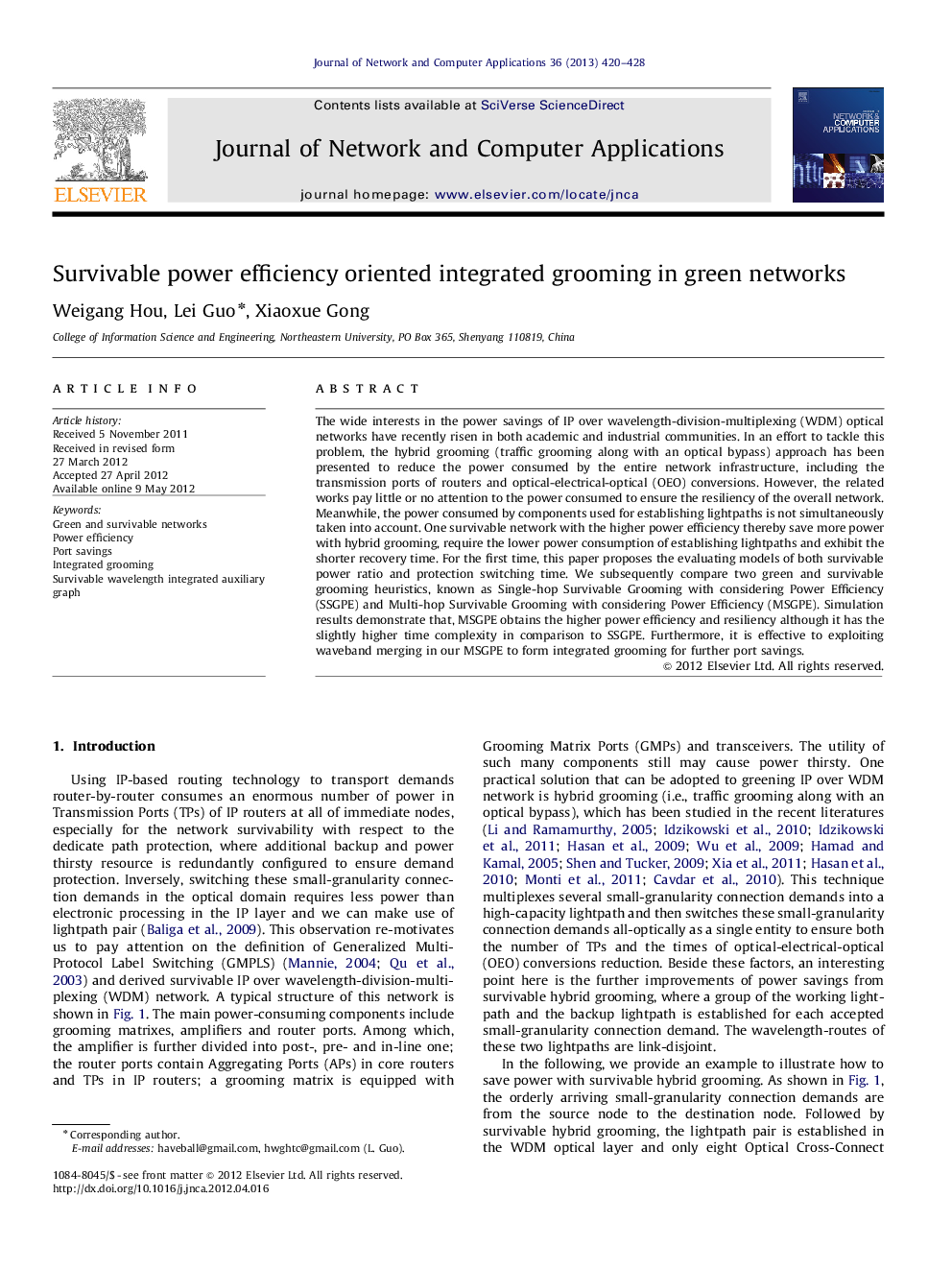| Article ID | Journal | Published Year | Pages | File Type |
|---|---|---|---|---|
| 460033 | Journal of Network and Computer Applications | 2013 | 9 Pages |
The wide interests in the power savings of IP over wavelength-division-multiplexing (WDM) optical networks have recently risen in both academic and industrial communities. In an effort to tackle this problem, the hybrid grooming (traffic grooming along with an optical bypass) approach has been presented to reduce the power consumed by the entire network infrastructure, including the transmission ports of routers and optical-electrical-optical (OEO) conversions. However, the related works pay little or no attention to the power consumed to ensure the resiliency of the overall network. Meanwhile, the power consumed by components used for establishing lightpaths is not simultaneously taken into account. One survivable network with the higher power efficiency thereby save more power with hybrid grooming, require the lower power consumption of establishing lightpaths and exhibit the shorter recovery time. For the first time, this paper proposes the evaluating models of both survivable power ratio and protection switching time. We subsequently compare two green and survivable grooming heuristics, known as Single-hop Survivable Grooming with considering Power Efficiency (SSGPE) and Multi-hop Survivable Grooming with considering Power Efficiency (MSGPE). Simulation results demonstrate that, MSGPE obtains the higher power efficiency and resiliency although it has the slightly higher time complexity in comparison to SSGPE. Furthermore, it is effective to exploiting waveband merging in our MSGPE to form integrated grooming for further port savings.
